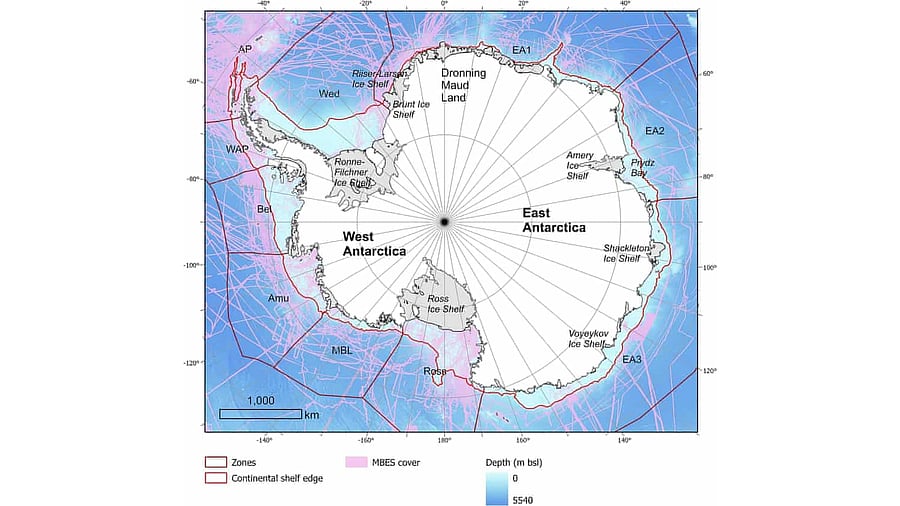
Network
A recent study unveils a vast network of 332 submarine canyons beneath Antarctica's ocean floor, far exceeding previous estimates. These canyons, formed by underwater currents and glacial activity, play a crucial role in transporting nutrients, influencing ocean circulation, and impacting the stability of ice shelves.
The new map, published in the journal Marine Geology, was created using high-resolution bathymetric data gathered from more than 40 international research expeditions. Researchers from the University of Barcelona and University College Cork led the study.
Submarine valleys, also known as submarine canyons, are deep, steep-sided valleys carved into the ocean floor, often found near continental shelves. They are formed by underwater currents, glaciers and sediment flows, and help transport nutrients, support marine life, and play a key role in ocean circulation and climate systems.
These are not shallow—they can go as deep as 4,000 meters. David Amblas, a researcher from the University of Barcelona, explained that “Some of the submarine canyons we analysed reach depths of over 4,000 meters.”
He also explained the systems of East Antarctica, which are complex, ever-dynamic and growing. Confined channels less than 10 km long, generally on the order of tens of metres deep and linear in plan view, are known as submarine gullies and are commonly found alongside or within canyon systems on the continental slope.
In contrast, West Antarctica’s canyons are shorter and steeper, with V-shaped cross-sections, while the East's are broader and U-shaped, suggesting a longer and more intense history of glacial sculpting.
The icy blanket of Antarctica is a mysterious terrain, as most of its lands remain still mainly unexplored because of its thick blankets of ice, with many hidden secrets beneath it. These places might sound remote and mysterious, but they play a quiet, decisive role in our planet’s health.
Submarine canyons transport sediments and nutrients from the coast to deeper areas. They connect shallow and deep waters and create habitats rich in biodiversity.
The canyons also play a key role in the way Antarctic waters move. Dense, salty water from the continental shelf flows down into the Southern Ocean through these channels, driving global circulation that helps regulate temperature and nutrients across the world’s oceans. At the same time, warm water from the deep ocean can rise through the canyons, reaching beneath ice shelves and speeding up melting.
As oceans warm and frozen ice shelves melt, these underwater pathways could have an outsized influence on weather patterns, sea levels, and even the stability of massive ice sheets. And by using advances in mapping technology, researchers can now see deeper and more clearly than ever before, looking out to the once unimaginable landscapes.
These hidden formations influence how sediment, nutrients and water move between the coast and the deep ocean, creating rich habitats and impacting the global ocean currents. Crucially, they help to channel warm water toward ice shelves, resulting in their melting, and guide cold water back into the deep ocean, impacting climate systems like the formation of Antarctic Bottom Water.